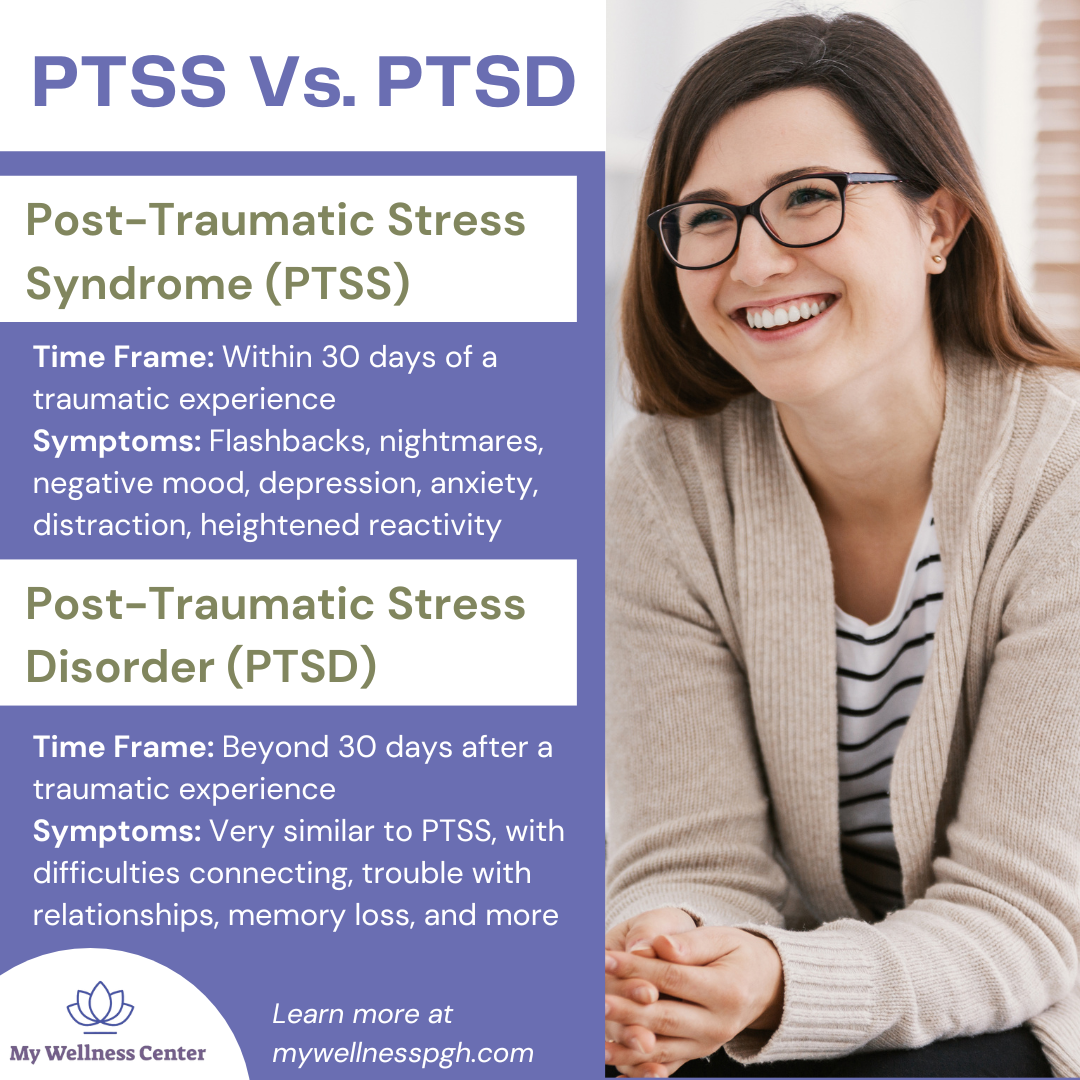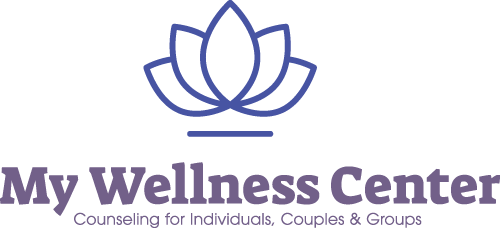PTSD—post-traumatic stress disorder—receives plenty of attention in society and pop culture.
PTSD frequently appears in film, literature, and even music, and we often see symptoms of PTSD in first responders, soldiers, and even mothers who’ve experienced traumatic births.
While PTSD is well-known, many people don’t know about PTSS (post-traumatic stress syndrome). Although PTSS is a relatively new buzzword, it often presents itself in individuals who experience PTSD.
Understanding the differences and similarities between these two mental health issues can lead to better health outcomes. Read our full blog to learn more!

Table of Contents
PTSD vs. PTSS: Differences
PTSD vs. PTSS: Symptoms
PTSD vs. PTSS: Treatment
Find Therapy for PTSD and PTSS
PTSD vs. PTSS: Differences
The biggest difference between PTSS and PTSD is timing.
Post-Traumatic Stress Syndrome: PTSS is a combination of mental health symptoms experienced within 30 days of a traumatic event, such as a car accident, a violent assault, or a burglary, and it is sometimes referred to as “acute stress disorder.” Individuals who experience PTSS are more likely to experience PTSD later on.
Post-Traumatic Stress Disorder: PTSD is a combination of mental health symptoms experienced beyond 30 days after a traumatic event. PTSD is often broken down into acute PTSD and chronic PTSD, with the main difference being the number of traumatic events and the duration of symptoms.
PTSD vs. PTSS: Symptoms
Because PTSS and PTSD are so closely related, their symptoms frequently overlap. Some of these most common symptoms include:
- Intrusive Thoughts: Persistent, unwanted memories of the traumatic event frequently intrude on daily life and are difficult to control.
- Distressing Flashbacks: Sudden, vivid experiences make it feel as though the trauma is happening all over again.
- Nightmares: Troubling dreams related to the trauma often disrupt sleep and leave individuals feeling unsettled.
- Avoidance of Triggers: Individuals go out of their way to avoid people, places, or situations that bring back painful memories.
- Persistent Negative Mood: Feelings of sadness, hopelessness, or irritability linger, often causing a loss of interest in enjoyable activities.
- Heightened Reactivity: People may feel constantly on edge, easily startled, and struggle to focus or relax.
- Emotional Numbness: A sense of detachment from emotions makes it hard to engage with personal feelings or experiences.
- Social Detachment: Individuals may feel disconnected from others, leading to isolation and strained relationships.
- Impaired Performance at Work or School: Difficulty concentrating and managing tasks often interfere with professional or academic responsibilities.
- Reduced Interest In Favorite Activities: Individuals suffering from post-traumatic stress may find their hobbies dull, tedious, or uninteresting.
- Feelings of Shame And Guilt: Patients dealing with PTSS and PTSD frequently report feelings of shame and guilt—often over their involvement in the traumatic event or over their response in dealing with the aftermath.
- Problems Controlling Emotions: The heightened emotions found within post-traumatic stress may be difficult to control, which can lead to conflict in relationships.
- Difficulty Connecting With People: The emotional and behavioral impact of post-traumatic stress may prevent people from maintaining or establishing bonds with other people.
- Trouble Keeping Friends And Partners: The negative emotions and physical toll of post-traumatic stress can interfere with communication, behavior, and intimacy.
- Memory Loss: The mental and emotional toll patients experience can directly interfere with memory.
Left untreated, PTSD and its symptoms can have a dramatic impact on life expectancy while simultaneously reducing a patient’s overall quality of life.
PTSD vs. PTSS: Treatment
Treatment for PTSS and PTSD is virtually identical—but it’s critical to seek support for PTSS as quickly as possible.
If post-traumatic stress syndrome is identified and treated early on, we can reduce the likelihood of experiencing PTSD and prevent symptoms from compounding over time and impacting other areas of life.
Some of the most common treatment methods for PTSS and PTSD include:
1. Cognitive Processing Therapy (CPT): CPT is effective at helping individuals reframe negative thoughts about their trauma—something that’s useful with both PTSD and PTSS. When patients challenge and change the most harmful beliefs surrounding their trauma, they can reduce their overall pain and improve their mental health.
2. EMDR: Eye Movement Desensitization and Reprocessing therapy (EMDR) can be transformational in helping individuals reprocess traumatic memories and reduce their emotional impact—both immediately following the event or years after the experience. Learn more about EMDR and its benefits in What Is EMDR Therapy?
3. Group Therapy: Group therapy empowers individuals to learn from each other’s experiences and develop new, effective coping strategies. As a bonus, sharing these traumatic experiences with individuals managing similar struggles can provide support and reduce the feelings of isolation commonly associated with post-traumatic stress.
4. Mindfulness and Stress Reduction Techniques: Engaging in mindfulness practices—such as meditation, yoga, and deep breathing—can significantly reduce stress and enhance emotional regulation. These techniques encourage individuals to stay grounded in the present moment, helping them build resilience and better manage the emotional triggers that often accompany trauma.
5. Lifestyle Changes: Adopting healthy lifestyle habits, like regular exercise, a balanced diet, and plenty of sleep, can boost both physical and mental health—enhancing overall wellbeing and resilience.
6. Support Systems: Establishing a reliable support system of family, friends, and mental health professionals plays a key role in recovery. A network of caring individuals offers essential emotional support, motivation, and practical assistance, helping individuals feel less isolated as they work through the healing process.
7. Medication: Some doctors may prescribe antidepressants and anti-anxiety medication to manage the most debilitating mental and emotional symptoms of PTSD and PTSS. These may provide relief from the most overwhelming bouts of anxiety, depression, and insomnia that could accompany these responses to trauma.
Find Therapy for PTSD and PTSS
If you’re ready to manage PTSD or PTSS, contact us. Our team of Pittsburgh PTSD therapists is standing by to help you process your trauma and begin living life to the fullest.
Our Pittsburgh-based PTSD therapists include:

